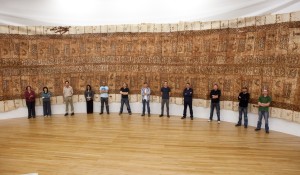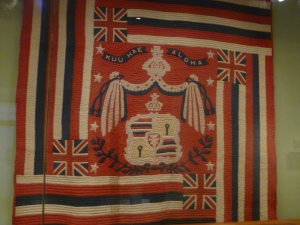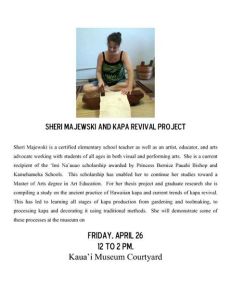Dyes & Designs in Samoan Siapo
Faʻa Samoa…In the Samoan Way…
Natural Dye
Dyes used in Samoan siapo come from nature. They are extracted or ground from nuts, tree bark, tree sap, roots, and seeds. There are five colors collected: oʻa is brown, lama is black, ago is yellow, loa is red, and soaʻa is purple. The traditional designs are symbols that reflect Samoan natural environment. There are 13 symbols used in siapo and they represent nets, coconut leaf and sennit, the trochus shell, pandanus blooms, pandanus leaves, breadfruit leaf, sandpiper bird designs, starfish, banana pod, rolled pandanus leaves, worm (this is almost extinct), centipede (which has been discontinued), and lastly, logologo (not found in modern siapo to the point that the meaning of this design has been lost). Original siapo artworks are made by combining these design elements (siapo.com).
Design Methods
There are two kinds of siapo design application methods practiced in Samoa and they are Siapo ʻElei (the rubbing method) and Siapo Mamanu (the freehand method). The Siapo ʻElei method leaves an imprint on the uʻa (bark cloth material). This is done by laying the uʻa on a design printing block that is carved into wood, called an upeti, and rubbing the uʻa with a swab that has been dipped in oʻa. Oʻa is a brown dye that is extracted from the bark of the Bishofia javanica, or blood tree. This is a pest in the Hawaiian Islands where it is known as the Bishop Tree or is called koko (blood). It is also called koko in Tonga and other island languages. The oʻa changes color over time from a pale tan to a rich, dark brown.
The next step in the process is to rub a red color over to define the design. Arrowroot plant is used as glue and is dabbed on any small holes, and then a second layer is placed on top and rubbing the oʻa is repeated, this time pressing the two layers together. Sections are joined using arrowroot and rubbing. This is usually the end of the process for large pieces known as ululima and uluselau. But for smaller pieces called vala, the design might be highlighted with more brown dye. Upeti in the older form was of both the sewn midrib variety as in Tongan kupesi, and also carved wood. Today, the men have been carving the upeti and have become the main artist of siapo ʻelei designs. However, they still base their designs on the traditional symbols. One upeti carving can yield many different imprints as dye can be applied to certain areas only to create an interesting design using the positive and negative space (Pacific Tapa, p. 16, 1997).
Siapo Mamanu is the freehand method of design and is creatively applied by hand using a dried pandanus brush, called a paogo. The design is created by the artist using black dye to sketch the design, and then the artist may choose to use a veriety of color to finish the piece (siapo.com)
These two methods of desing can also be combined to create unique artwork that is reinvented with each piece of uʻa. Siapo is one of the oldest art forms and symbols of Samoan culture. Used for clothing, burial shrouds, bed covers, ceremonial garments, and much more… (siapo.com)













